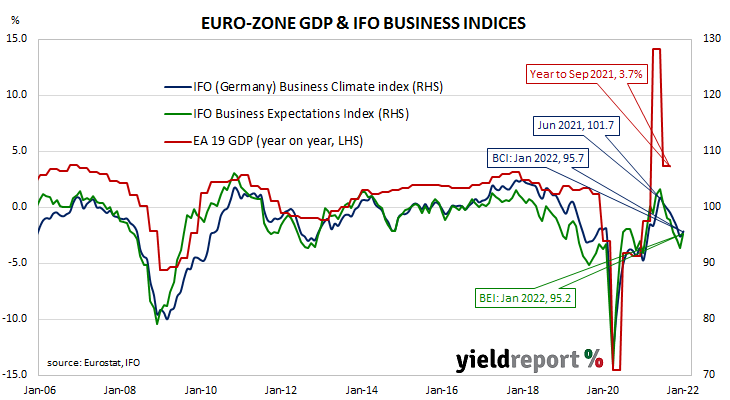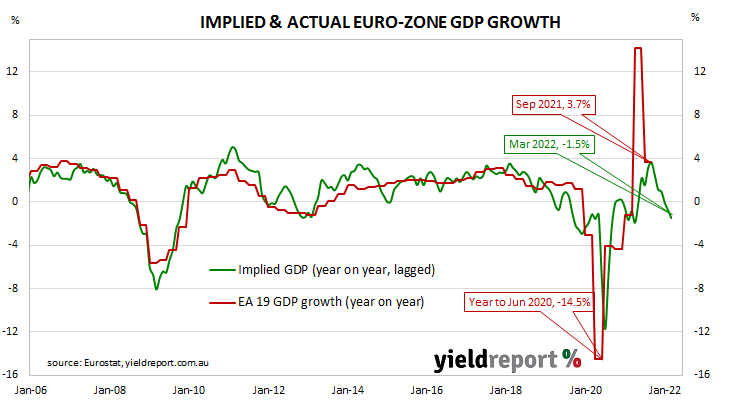Summary: ifo business climate index up 2.5 to 95.7 in January, above expected figure; expectations index up, current conditions index down; German economy starting new year with “glimmer of hope”; expectations index implies euro-zone GDP contraction of 1.5% in year to April 2022.
Following a recession in 2009/2010, the ifo Institute’s business climate index largely ignored the European debt-crisis of 2010-2012, mostly posting average-to-elevated readings through to early-2020. However, the index was quick to react in the March 2020 survey, falling precipitously. The rebound which began in May of that year was almost as sharp but it was also characterised by a period of below-average readings which lasted until early 2021. Readings over the past six months have declined.
According to the latest figures released by the Institute, its business climate index increased to 95.7 in January. The reading was above the expected reading of 94.4 as well as December’s final reading of 94.8. The average reading since January 2005 is just above 97.
“While companies’ assessments of the current situation were somewhat less positive, their expectations improved considerably,” said Clemens Fuest, President of the ifo Institute. “The German economy is starting the new year with a glimmer of hope.”
The expectations index increased from December’s revised figure of 92.7 to 95.2, driving the business climate index higher. The current situation index declined slightly from 96.9 to 96.1.
German and French long-term bond yields increased moderately on the day. By the close of business, German and French 10-year yields had each gained 3bps to -0.08% and 0.33% respectively.
The ifo Institute’s business climate index is a composite index which combines German companies’ views of current conditions with their outlook for the next six months. It has similarities to consumer sentiment indices in the US such as the ones produced by The Conference Board and the University of Michigan.
It also displays a solid correlation with euro-zone GDP growth rates. However, the expectations index is a better predictor as it has a higher correlation when lagged by one quarter. January’s expectations index implies a 1.4% year-on-year contraction rate to the end of April 2022.



